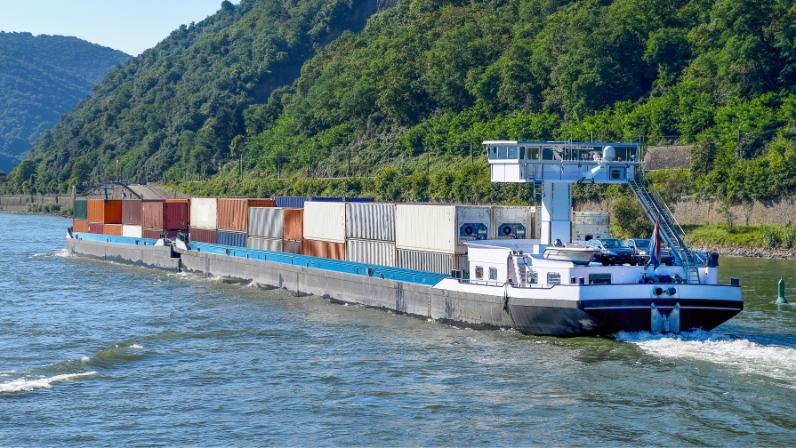
Cargo vessels are classed based on the sort of cargo they carry, their packing (or lack thereof), or the manner in which it is intended to be put onto the vessel.
Containership Dimensions
TEU capacity is typically used to classify containership sizes, which range from a few hundred TEUs for feeder boats to 18,000 TEUs or more for Ultra-Large Container Vessels (UCLVs).
Size is important since the capacity to load more containers onto the ship is critical to efficiency, but it is not the only factor. The ability to operate in certain port terminals or pass through the Panama or Suez canals is also a defining criterion for efficient seaborne cargo transportation.
Only a few ports across the world, such as Rotterdam and Singapore, have the facilities to handle ultra-large container ships. However, if a Panamax ship is completely loaded, it will be unable to call at some ports. Deepwater ports are those where very large or fully-laden ships can berth. As previously discussed, feeder vessels will provide a good link between the terminals.
1. Barges and feeders
Feeder’s vessels have capacities ranging from 300 to 1,000 TEUs. They can operate in tiny ports where large container ships cannot berth. Their cargo will be fed to these enormous ships, known as mother vessels, in deep-sea hubs, and cargo from the large vessels will be transported back to land. Strong cooperation saves time and allows larger vessels to visit fewer ports. Geared or gearless feeder vessels are available.
Container-carrying barges, which do not qualify as feeder’s vessels, are used to move containerized freight across interior waterways that larger vessels cannot enter. In this kind of intermodal transport, the barge may carry up to 300 TEUs in Europe, and 450-900 TEUs in North America.
Similarly, vessels operating in the Saint Lawrence Strait have limited capacity due to drought, but they are not feeders. They are specialist ships that require an “ice-class,” allowing them to function all year – even during a large ice flow.
2. The Panama Canal and Other Straits
Panamax and Neo-Panamax ships can pass through the Panama Canal in Central America since they are nearly as wide as the canal’s locks allow. Because larger locks have been built, Neo-Panamax ships are wider (up to 49 meters), longer, and deeper (a ship’s depth is also referred to as draft) than Panamax ships. As a result, Neo-Panamax ships can transport up to 14,000 TEUs, whereas Panamax vessels can only carry roughly 5,000.
Some transportation routes avoid the Panama Canal, imposing fewer limitations on the construction of ships that use it. These larger ships are referred to as Post-Panamax. They gave place to other, larger, and now Ultra-Large Container Vessels (ULCV), which can transport 18,000 TEUs or more. Suezmax ships can transit the Suez Canal; most of the time, this size refers to tanker boats. Their beam (the width of the ship) can be up to 50 meters wide and can be much bigger if the ship has a low draft.
Some ships are referred to as Post-Suezmax because their dimensions exceed what the strait or canal can allow for. They are even larger and have a higher cargo capacity (20,000 TEUs and up).



